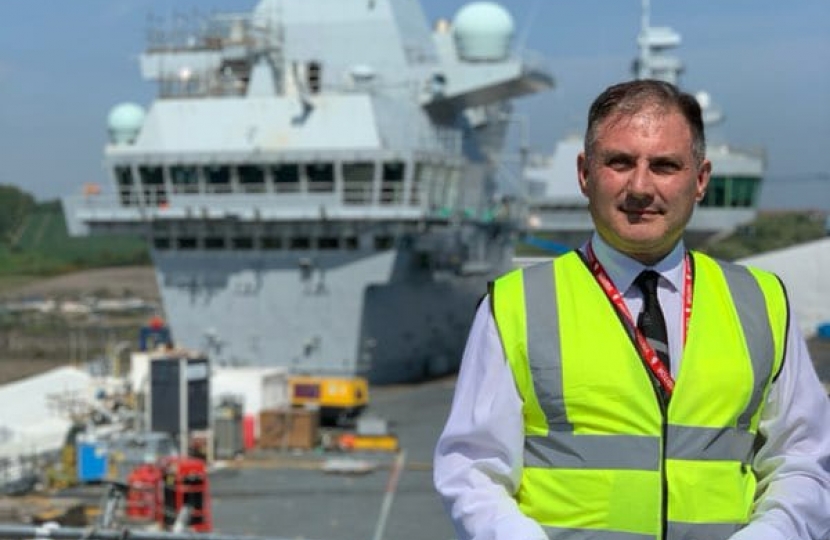
The most powerful and impactful things in the world can often be traced to their local roots. Behind all of the worthiest projects are dedicated people whose efforts stand invisibly behind to create something spectacular. This is particularly true of our new Queen Elizabeth Class aircraft carriers, the largest warships the Royal Navy has ever built, as well as the various other ships that would escort them on exercise and operations.
I had the privilege of visiting HMS Prince of Wales at Rosyth in Scotland, to see for myself the fruits of the hard work of people across our local area. Of course as many of you will know, the Ministry of Defence’s Defence Equipment and Support body (DE&S) is based at Abbeywood and played a central role in delivering this vessel, including procuring the various sensors and systems on the ships and the aircraft that will fly from them.
The mighty MT30 gas turbine engine which powers it was designed and built by Rolls Royce and was tested and will be serviced from their site in Patchway. Rolls Royce in Patchway employs staff from right across our area and I am proud to say that we are quite literally the driving force behind Britain’s largest warship.
Thales, based in Stoke Gifford, designed and delivered the FLYCO control tower on HMS Prince of Wales. Acting like an airport’s air traffic control tower, this oversees the operations of all aircraft using the carrier, including landing and take-off.
BAE Systems, the lead member of the Aircraft Carrier Alliance which built the Queen Elizabeth Class carriers, used its networked visualisation suite in Filton to bring together the Ministry of Defence and other partners working together on the ships for design reviews and approvals. Many of the key decisions that shaped the final delivery of this spectacular project were taken right here in our local area.
L3 MAPPS, based out of Aztec West, Bradley Stoke, provided the marine control systems – the IT and electronics which underpin the aircraft carrier and allow it to move.
Babcock pulled together the wider designs and delivered the ship assembly process, and have produced critical components, including delivering more than 10,000 tonnes of materials to Rosyth for construction. They have offices in Bristol, as well as Stoke Gifford and Patchway.
These companies and others in our defence and aerospace sectors draw employees from virtually every community in South Gloucestershire. Through their diligence, working together with partners elsewhere in Britain and indeed internationally, they have put together a warship that will help keep the rest of us safe from those that would do us harm as we go about our daily lives. Thank you to the workers, loved ones, and wider communities across South Gloucestershire who have helped make this remarkable endeavour possible.

